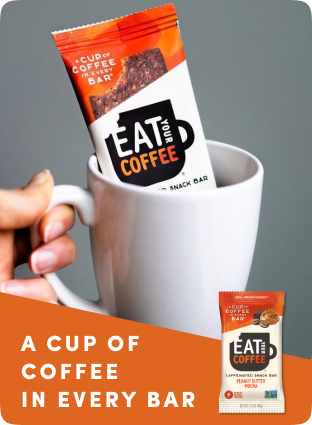For about as long as we’ve had presidents, we’ve had coffee in the White House. From John Adams drinking coffee to be more patriotic (with that Boston Tea Party and all) to Dwight Eisenhower spending D-Day “drinking endless cups of coffee” to John F. Kennedy’s using “Coffee with the Kennedys” to help win his US Senate seat in Massachusetts, the brew has been an important part of politics. Here’s a look at some notable presidents over the years, and their different coffee-drinking habits.
GEORGE WASHINGTON
George Washington was a coffee drinker — and an importer, according to his papers and ledger sheets. He imported 200 pounds of coffee in 1770. “I will thank you also for sending me, if an oppertunity should offer soon by Water, one hundred weight, or even a Barrel of good Coffee,” he wrote in 1784 to a Philadelphia merchant who helped him import goods. In November 1799, just weeks before he died, he asked for 150 beans from the Red Sea port of Mocha, which at the time was considered the best.
According to “The Presidents’ Cookbook,” a 1968 book that documented much about presidents and food, Martha Washington had her own “rules for good coffee.” For drip coffee, for every cup of water she used a heaping tablespoon of “specially selected coffee, pulverized as fine as cornmeal.” Black coffee was to be served with sugar before breakfast and after dinner — with some hot milk included in the breakfast cup.
JOHN ADAMS
During the Revolution, it became unpatriotic to drink tea. John Adams wrote to his wife, Abigail, on July 6, 1774, that he had asked his hostess in what is now Portland, Maine, if he could refresh himself with some tea. “No, sir,” he was told. But they could provide coffee. “Accordingly I have drank coffee every afternoon since, and have borne it very well,” Adams wrote. “Tea must be universally renounced. I must be weaned, and the sooner, the better.”
Those feelings must have worn off. Three years later, on Aug. 11, 1777, he wrote his wife from Philadelphia. “I hope the females will leave off their attachment to coffee. I assure you the best families in this place have left off, in a great measure, the use of West India goods. We must bring ourselves to live upon the produce of our own country. What would I give for some of your cider?”
THOMAS JEFFERSON
View StoryThomas Jefferson deemed coffee “the favorite drink of the civilised world.” He had beans imported from the East and West Indies, stocking his cellar at Monticello with up to 60 pounds of unroasted coffee. “Bourbon or E. India would always be preferred,” he wrote in 1809, “but good West India will give satisfaction.” The coffee was roasted, ground, and prepared before being served in a silver coffee urn made to Jefferson’s design in Paris.
ABRAHAM LINCOLN
Abraham Lincoln was used to sell products ranging from coffee to cigarettes, automobiles to life insurance, and California oranges to streamlined diesel electric trains.

STATE HISTORICAL SOCIETY OF NORTH DAKOTA
Abraham Lincoln was used to sell products ranging from coffee to cigarettes, automobiles to life insurance, and California oranges to streamlined diesel electric trains.
Abraham Lincoln was no foodie of his time. “He was almost entirely indifferent to food,” historians note, “except that he liked apples and hot coffee.” An often-cited quote has also been attributed to him: “If this is coffee, please bring me some tea; but if this is tea, please bring me some coffee.”
THEODORE ROOSEVELT
Teddy Roosevelt, his son once said, had a coffee cup that was “more in the nature of a bathtub.” He was also known for putting as many as seven lumps of sugar into his coffee, and some estimates suggest that he drank a gallon of coffee per day. Legend has it that, during a visit to Nashville, he was served Maxwell House coffee and said it was, “Good to the last drop.” The phrase became the company’s catchphrase, and Roosevelt’s image was used in some of its ads.
FRANKLIN ROOSEVELT
Franklin Roosevelt liked his coffee in the mornings, and requested a dark French roast. The White House staff would roast the beans themselves in the kitchen. “A coffee maker was placed on the President’s breakfast tray so that he could regulate the brewing to his satisfaction,” noted the 1968 book, “The Presidents’ Cookbook.”
But in 1942, when coffee was added to the list of items the government was rationing during World War II, some habits began to change. Eleanor Roosevelt said at a press conference that everyone at the White House — including the president — was being limited to one cup per day. But her husband, who she said considered himself an expert in making coffee, had a trick. “My husband tells me,” she said, “that if you dry out your used coffee grounds and then add a teaspoonful of fresh coffee and then boil it up it will make good coffee.”
Apparently his recipe was as bad as it sounds. Several months later, the White House let it be known that the president had given up coffee almost completely — refusing it in the mornings and only having an occasional small cup after dinner. “Roosevelt Drops Coffee, Takes Milk” read the headline in the New York Times. “He just decided he liked milk better,” Eleanor Roosevelt said (while noting she was still taking coffee with her breakfast).
HARRY TRUMAN
The Trumans were apparently quite discerning coffee drinkers and, when Harry Truman became president, the White House staff had to learn to make coffee to their liking. “After Mrs. Truman had taken some coffee in her spoon to look at the color a few times, the kitchen experimented to produce a coffee that would please her,” according to “The Presidents’ Cookbook.” Later, a personal aide was sent to tour the kitchen on the presidential yacht “to instruct the cooks in the brewing of coffee to please the Truman taste.”
DWIGHT EISENHOWER

President Dwight Eisenhower and Vice President Richard Nixon appeared to be toasting one another over cups of hot coffee in Washington, D.C., on Jan. 21, 1957.
On D-Day, General Eisenhower is said to have spent most of his day in his trailer “drinking endless cups of coffee” and waiting for reports to come in, according to David Eisenhower’s book “Eisenhower At War.” Later when Eisenhower was about to be sworn in as president, there was so much ill will between him and Harry Truman that Eisenhower refused to go into the White House to have a cup of coffee just before the transition. “The other item that interests me and, I hope, you, is coffee,” he said at the start of a press conference on Jan 27, 1954, before announcing the Federal Trade Commission was investigating “the trouble about coffee prices in this country.”
JOHN KENNEDY

Gov. Edmund G. Brown let out a howl, to the amusement of President John F. Kennedy (right), after spilling a cup of coffee while watching special Navy maneuvers from the deck of the carrier Kitty Hawk. HENRY GRIFFIN/ASSOCIATED PRESS
By some accounts, he owes his political rise to coffee. Kind of. According to several oral histories, his 1952 US Senate campaign in Massachusetts staged what would become famed “Coffee with the Kennedys.” Kennedy wanted to target women, and he and the prominent women in his family arranged coffee hours in homes across Massachusetts.
“This was the first time that this was ever done in Fall River by any candidate,” said Edward C. Berube, who managed Kennedy’s campaign in Fall River. “I mean, there was also the handshaking up and down the streets and going to shops. But he ran these big teas, he called them, and this was the big thing.”
As a congressman, he would occasionally have coffee at the Hot Shoppe over on the Virginia side of the 14th Street Bridge. As president, he often had coffee hours with other members of Congress.
Hale Boggs, a Democrat from Louisiana, said he didn’t often go to the breakfasts “because the food isn’t any good.” “The eggs are Boston style — dry and uninteresting,” he said, in comments that created a bit of a stir. “Sort of weak coffee, no chicory in it, no Tabasco, no grits.” Kennedy read the coverage and, the next Tuesday, several waiters presented him with a big bottle of Tabasco, a bowl of grits, and coffee and chicory.”
But the president could also be a bit stingy.
“If you had a cup of coffee and a doughnut with Jack, you’d pick up the tab,” Cardinal Richard Cushing, the archbishop of Boston, said in an oral history interview conducted in 1966 with Edward M. Kennedy.
As for how he took his coffee?
“I don’t think he used cream in the coffee. Did he?” John Harris, a Globe reporter who followed Kennedy’s presidential campaign, said as part of an oral history interview. “I don’t think he did.”
RICHARD NIXON

President Nixon and Pat Nixon having a cup of coffee on the Truman balcony. July 25, 1972. JACK KIGHTLINGER/RICHARD NIXON
Richard Nixon would always have a cup of coffee with breakfast. Then, when arriving at work he’d have a second. “He is not a chronic coffee drinker, a staff aide explained,” according to a story in the Washington Post just before Nixon’s inauguration in 1969. “But he does offer coffee to his visitors throughout the day and he, of course, drinks a cup with them.”
During a meeting in the Oval Office on Sept. 9, 1971, Nixon offers his guest some coffee. But in another response lost on the Nixon tapes, the president utters, “Coffee’s [unintelligible] here. Yeah. Fine.” So, alas, we’ll never know exactly how Nixon felt about the coffee served at the White House.
JIMMY CARTER

Jimmy Carter (center) held a cup of coffee and met workers during a shift change at a steel mill on April 21, 1976, in Pittsburgh, Pa. HARRY CABLUCK/ASSOCIATED PRESS
Jimmy Carter would wake up around 5:30 a.m., starting with fresh-squeezed juice and hot coffee before heading to the Oval Office, according to Henry Haller’s 1987 book, “The White House Family Cookbook.”
He didn’t always have lots of time for it, but at times coffee was built into his schedule. On June 25, 1979, in Tokyo, Carter’s diary reveals that at 2:19 p.m., “The Presidential party had coffee with invited guests.” Eleven minutes later, the motorcade was off. At 9:35 p.m., again, “The Presidential party had coffee.” For 10 minutes.
During a meeting on March 5, 1977, he did a telephone call in program with Walter Cronkite for the CBS Radio Network. A man from Peru, Ill., asked about coffee imports. Carter said they had little control over the price of imports. “I think we have one opportunity as consumers, and that is to drink less coffee as the price goes up,” he said. “This is almost inevitable in a free enterprise system… I don’t think we can do anything to control the price of coffee except to reduce consumption.”
Related: The Daily Diary of President Jimmy Carter
RONALD REAGAN

Ronald Reagan, campaigning in Texas, went through the breakfast line before speaking to students at Southern Methodist University in Dallas on April 6, 1976. GREG SMITH/ASSOCIATED PRESS
Ronald Reagan would start his day with bran cereal, skim milk, fresh fruit and decaf coffee, according to The White House Family Cookbook. And it’s unclear whether Reagan ever switched to a caffeinated cup. “I never drink coffee at lunch,” he is quoted as saying. “I find it keeps me awake for the afternoon.”
GEORGE H.W. BUSH
George H.W. Bush was known to drink 10 cups of coffee a day until he was diagnosed with a thyroid disorder and irregular heartbeat in May 1991 that briefly required him to avoid caffeine. “He’s not happy with that decaf stuff,” a White House spokesman said at the time. About two weeks after he was hospitalized, he started easing back to regular coffee.
BILL CLINTON

Andrew Dodwell, 9 (left), watched as Democratic presidential hopeful Gov. Bill Clinton, of Arkansas, and wife Hillary Rodham Clinton, sipped coffee at Blake’s Restaurant in Manchester, N.H., on Feb. 15, 1992. STEPHAN SAVOIA/ASSOCIATED PRESS
Bill Clinton often had a cup of coffee nearby, in whatever he was doing: Grieving with families of Columbine shooting victims, meeting with congressional leaders, speaking with reporters, or dropping into a McDonald’s in Little Rock, Ark. And earlier this year he toured the Haiti Coffee Academy with Todd Carmichael, the founder of Philadelphia-based La Colombe.
But coffee has also been the source of controversy for Clinton. When he was president, he got into a mini-scandal for holding fund-raisers that were billed as a chance to drink coffee with the president at the White House (It’s illegal to set a price of admission for the executive mansion). One of the gifts Monica Lewinsky gave to Clinton? A coffee cup. And when he lobbied Senator Edward M. Kennedy to endorse Hillary Clinton’s presidential campaign, he reportedly belittled Barack Obama by saying, “A few years ago, this guy would have been getting us coffee.”
GEORGE W. BUSH

President Bush (center) stood with store manager Reynaldo Ramos as he greeted immigrant workers after buying coffee during an unscheduled stop at a Dunkin' Donuts in Alexandria, Va., on July 5, 2006. CHARLES DHARAPAK/ASSOCIATED PRESS
George W. Bush would wake up at 5:30 a.m. and get coffee for him and his wife. They’d drink it while reading the morning papers. But he apparently got used to having staff assistance. Laura Bush said that he woke up the day after they left the White House and started to make their morning cup. “He had forgotten how,” she told Oprah Winfrey.
Originally Posted On: Boston Globe




